
The Ultimate Guide to Paddleboarding Arran: Unleashing the Thrills of the Island’s Waters
Introduction: Riding the Waves with Passion
Alright, fellow water enthusiasts!
Welcome to the ultimate guide to Paddleboarding Arran, brought to you by Love Arran.
We’re all about diving headfirst into the exhilarating world of water sports and helping passionate adventurers like you make the most of your paddle boarding escapades.
In this epic guide, we’ll take you on a wild ride through the origins of paddle boarding, the essential gear you’ll need, mastering the art of paddling, and even exploring the coolest paddle boarding spots around the globe. Whether you’re a rookie or a seasoned paddler, this article will equip you with all the knowledge and wisdom you need to conquer the waves and embrace the thrills of paddle boarding to the fullest.
So, grab your boards and let’s dive in!
The Origins of Paddle Boarding: Where Legends Begin
Ah, paddle boarding, or as we fondly call it, stand-up paddleboarding (SUP). Let’s rewind the tape and explore its roots in ancient Polynesian cultures, where it wasn’t just a sport but a way of life. These folks used paddle boards for transportation and fishing, effortlessly gliding through shallow waters and snagging fish like pros. As time flowed, paddle boarding evolved into a worldwide phenomenon, captivating water enthusiasts from every corner of the globe.
Paddleboarding: Unveiling its Rich History and Evolution
Hold on tight as we dive deep into the captivating history of stand-up paddleboarding (SUP). Brace yourself for tales of ancient Africa, Polynesia, and South America, where paddleboarding found its humble beginnings. These vibrant regions witnessed the birth of paddleboarding, where people harnessed the power of paddling for various purposes, from transportation to pure wave-riding pleasure.
Tom Blake and the Rise of Modern Paddleboarding
Fast forward to the early 20th century, and we stumble upon the legendary surfer, Tom Blake. This paddleboarding pioneer had a vision to revolutionize the sport, drawing inspiration from the ancient Hawaiian boards. With his genius designs and lightweight creations, he captured the hearts of water enthusiasts across the United States, setting the stage for paddleboarding’s evolution into the modern era.
The Discovery of SUP and its Global Phenomenon
Picture this: the swinging 60s in Hawaii, where the radical surfers made a ground-breaking discovery that would send shockwaves through the world of paddleboarding. By standing on their surfboards and using outrigger paddles, they unlocked a new perspective, gliding atop waves with unparalleled grace and style. This game-changing realization marked the birth of contemporary stand-up paddleboarding (SUP). But it wasn’t until the early 2000s in California that SUP truly exploded, capturing the attention of wave enthusiasts worldwide. From cross-training for surfers to a global sensation, SUP took the water sports world by storm, offering a more accessible alternative to traditional surfing that even the seasoned wave riders couldn’t resist.
Table of Contents:
Paddle Boarding Equipment: Gear Up for Epic Adventures
Ahoy, paddle adventurers! To embark on your thrilling paddle boarding escapades, you’ll need the essential gear to conquer the waters like a true champion. Let’s dive into the must-have equipment:
water.
Paddle Board: Your Vessel of Glory
Picture this: a majestic paddle board standing tall, the centrepiece of your paddle boarding experience. Choosing the right board is crucial, my friend. Consider your skill level, intended use, and personal preferences when finding the perfect board that matches your adventurous spirit.
Paddle: Unleash the Power of Propulsion
A paddle is more than just a tool for propulsion; it’s an extension of your body, a key player in your paddle boarding endeavours. Here are some factors to consider when selecting a paddle:
- Length: The length of your paddle is determined by your height and the type of paddling you’ll be doing. Stand next to the paddle and raise your arm straight up; the paddle’s handle should reach your wrist.
- Material: Paddles can be made from various materials such as aluminium, fiberglass, carbon fibre, or wood. Each material has its own characteristics in terms of weight, durability, and performance. Fiberglass and carbon fibre paddles are popular choices for their lightweight nature and excellent power transfer.
- Blade Shape: Paddle blades come in different shapes, including teardrop, rectangular, and dihedral. The shape affects how the paddle moves through the water, providing varying levels of stability and efficiency. Experiment with different blade shapes to find the one that suits your style and conditions.
- Adjustable vs. Fixed: Adjustable paddles allow you to modify the length to fit different riders or activities, making them versatile options. Fixed paddles, on the other hand, offer a lighter and more rigid feel. Consider your needs and preferences to decide which type suits you best.
Personal Flotation Device (PFD): Safety First, Always
Safety should never be compromised when venturing into the waters. A Personal Flotation Device (PFD), also known as a life jacket, is an essential piece of equipment that can save lives. Make sure to choose a PFD specifically designed for paddleboarding, offering comfort, mobility, and buoyancy.
Leash: Stay Connected to Your Board
Don’t let your board drift away from you! A leash is a vital accessory that keeps you connected to your paddle board, preventing it from getting carried away by strong currents or winds. Choose a leash that is suitable for your board size and type, ensuring a secure attachment to your ankle or calf.
Proper Attire: Dress for the Occasion
Dress appropriately for your paddle boarding adventures to stay comfortable and protected. Consider the water and weather conditions of your location. opt for lightweight, quick-drying clothing, and don’t forget sun protection, such as a hat, sunglasses, and sunscreen. In colder conditions, wear a wetsuit or dry suit to keep warm.
Other Essentials: Be Prepared for Anything
Carry a few additional items to ensure a safe and enjoyable paddle boarding experience:
- Waterproof Bag: Keep your belongings, such as keys, phone, and snacks, dry and secure in a waterproof bag.
- Whistle: A whistle can be a useful tool to signal for help in case of an emergency.
- Sunscreen: Protect your skin from the sun’s harmful rays by applying sunscreen, even on cloudy days.
- Water and Snacks: Stay hydrated and energized during your paddle boarding sessions by bringing water and snacks along.
- First Aid Kit: It’s always wise to have a basic first aid kit in case of minor injuries.
Remember, safety should be your top priority. Invest in quality equipment and always check the condition of your gear before heading out on the water.
Mastering the Art of Paddling: Techniques for Success
Now that you’re geared up, it’s time to learn the art of paddling like a pro. Paddle boarding involves mastering a few fundamental techniques to ensure efficiency, balance, and control. Let’s explore the key paddle boarding techniques:
Stance and Balance: Find Your Centre of Gravity
Maintaining a stable and balanced stance is crucial for successful paddle boarding. Follow these steps to find your centre of gravity:
- Stand in the middle of the board with your feet parallel, about hip-width apart.
- Keep your knees slightly bent to absorb any movement and maintain stability.
- Engage your core muscles to help with balance and stability.
- Look forward, keeping your head up and your gaze focused on the horizon.
- Distribute your weight evenly on both feet and avoid leaning too far back or forward.
Practice finding your balance by shifting your weight from side to side and front to back while keeping a stable stance. As you gain confidence, you can experiment with different positions to accommodate various paddling situations.
Basic Paddle Strokes: Moving Through the Water
The core paddle strokes in stand-up paddleboarding are the forward stroke and the sweep stroke. Mastering these strokes will allow you to manoeuvre your board effectively and efficiently:
Forward Stroke:
- Hold the paddle with one hand on the top handle (grip) and the other on the shaft, slightly wider than shoulder-width apart.
- Plant the blade fully in the water near the front of the board, with the entire blade submerged.
- Keeping your arms straight, pull the paddle back, using your core muscles and torso rotation for power.
- Exit the water with the paddle blade near your feet and repeat the stroke on the opposite side.
The forward stroke propels you forward and is the most commonly used stroke in paddle boarding.
Sweep Stroke:
- To turn or change direction, use the sweep stroke.
- Place the paddle blade in the water towards the tail end of the board.
- Sweep the paddle in a wide arc away from the board, leading with your top hand and using your torso to generate power.
- The sweep stroke helps to turn the board smoothly and efficiently.
Mastering the sweep stroke allows you to navigate and change direction effectively.
Getting Up and Starting: From Kneeling to Standing
Follow these steps to get up and start paddle boarding from a kneeling position:
- Begin in a kneeling position on the board, cantered between the handles.
- Place your hands on either side of the board, just behind the centre.
- Shift your weight forward and push yourself up into a standing position, one foot at a time.
- Find your stable stance with your feet hip-width apart and parallel to each other.
- Pick up the paddle and start paddling using the forward stroke technique.
Practicing the transition from kneeling to standing will help you develop the necessary coordination and balance for a smooth start.
Turning: Navigating Different Directions
To turn your paddle board, you can use various techniques depending on the situation:
- Back Paddle: Perform a backward stroke on one side of the board to create a reverse motion and turn in the opposite direction.
- Step Back Turn: Step back with one foot, creating a pivot point, and use a sweeping motion with the paddle on the opposite side to turn the board.
- Cross-Bow Turn: Reach your paddle out to the front of the board on one side and push the blade into the water while pivoting your body to face the opposite direction. This turn is useful for tight manoeuvres and quick turns.
Practice these turning techniques in different conditions to become proficient at navigating your paddle board in any situation.
Exploring Advanced Paddle Boarding Techniques
Once you have mastered the basics, you can explore more advanced paddle boarding techniques to enhance your skills and take your paddle boarding to the next level. Here are a few advanced techniques to consider:
Bracing: Maintaining Stability in Challenging Conditions
Bracing is a technique used to maintain stability and prevent falling when encountering waves or choppy water. Follow these steps to perform a brace:
• As you approach an obstacle or encounter rough water, position your paddle horizontally on the water surface with the blade angled slightly downward.
• Shift your weight slightly to the side you want to brace.
• Press down on the paddle to create stability and counterbalance the force of the water.
• Keep your knees bent and your core engaged to maintain stability.
Practicing bracing will help you feel more confident and secure in challenging conditions.
Pivot Turns: Rapidly Changing Direction
Pivot turns are useful when you need to quickly change direction, especially in surfing or Whitewater paddleboarding. Here’s how to execute a pivot turn:
• Begin by placing your paddle blade near the tail end of the board, with the blade angled towards the nose.
• Quickly step back with your rear foot while simultaneously pulling the paddle towards the nose of the board.
• As you pivot, shift your weight towards the tail of the board to facilitate the turn.
• Once the turn is complete, regain your balance and continue paddling in the new direction.
Pivot turns require agility, balance, and timing, so practice in calm waters before attempting them in more challenging conditions.
Surfing: Riding the Waves
If you’re interested in paddleboarding in the ocean and catching waves, learning to surf with your paddle board opens up a whole new realm of possibilities. Here are some tips for paddleboard surfing:
• Start by selecting appropriate beginner-friendly waves with a gentle slope.
• Paddle towards the wave, positioning yourself to catch it at the right moment.
• Once you feel the wave pushing you, quickly transition from paddling to standing.
• Use the paddle to maintain balance and make small adjustments to your trajectory.
• Enjoy the ride and practice navigating the wave with small adjustments in your body position and paddle strokes.
Surfing with a paddle board requires wave-reading skills, timing, and practice. Start with smaller waves and gradually progress to larger ones as your skills improve.
Safety Considerations and Etiquette
Safety should always be a priority when paddle boarding. Here are some important safety considerations and etiquette guidelines to keep in mind:
Weather and Water Conditions:
- Check the weather forecast and water conditions before heading out. Avoid paddle boarding in severe weather conditions, strong winds, or thunderstorms.
- Be aware of currents, tides, and potential hazards in the water, such as rocks, reefs, or strong currents.
- Start in calm waters if you’re a beginner and gradually progress to more challenging conditions as your skills improve.
Personal Safety Equipment:
- Always wear a properly fitted Personal Flotation Device (PFD) or life jacket.
- Use a leash to stay connected to your paddle board.
- Bring a whistle or signalling device to attract attention in case of an emergency.
Sun and Heat Protection:
- Protect yourself from the sun by wearing sunscreen, a hat, sunglasses, and lightweight clothing that covers your skin.
- Stay hydrated by bringing water and staying properly hydrated throughout your paddle boarding session.
Respect for Others:
- Be mindful of other water users, such as swimmers, surfers, and boaters. Give them enough space and yield the right of way when necessary.
- Follow any local regulations or guidelines regarding paddle boarding in your area.
- Maintain a friendly and respectful attitude towards other paddle boarders and water enthusiasts.
Emergency Preparedness:
- Be familiar with basic first aid techniques and carry a basic first aid kit with you.
- Inform someone about your paddle boarding plans, including your intended route and estimated return time.
- In case of an emergency, stay calm and seek help or assistance as needed.
Finding Your Paddle Boarding Community
Paddle boarding is not only a fun and rewarding activity but also an opportunity to connect with a vibrant community of fellow enthusiasts. Here are some ways to find and engage with the paddle boarding community:
Local Paddle Boarding Groups and Clubs:
- Search for local paddle boarding groups or clubs in your area. These groups often organize events, outings, and social gatherings where you can meet other paddle boarders and learn from experienced individuals.
- Join online forums and social media groups dedicated to paddle boarding. These platforms provide a space for sharing experiences, tips, and connecting with like-minded individuals.
Paddle Boarding Events and Competitions:
- Stay updated on paddle boarding events and competitions in your region. Participating in these events not only allows you to showcase your skills but also provides an opportunity to meet fellow enthusiasts and learn from experienced paddle boarders.
Paddle Boarding Workshops and Lessons:
- Consider attending paddle boarding workshops or taking lessons from certified instructors. These sessions not only enhance your skills but also offer a chance to meet other participants who share your passion for paddle boarding.
Environmental and Conservation Efforts:
- Engage in paddle boarding activities that promote environmental awareness and conservation. Join cleanup initiatives, beach or river restoration projects, or other efforts to protect and preserve the natural areas where you paddle.
By connecting with the paddle boarding community, you can gain valuable insights, share experiences, and build lasting friendships with fellow enthusiasts.
Where Can You Rent a Paddleboard on Arran?
So, are you ready for an adventure on Arran? Discover the best paddleboard rental options on the island and experience the thrill of paddleboarding amidst its stunning landscapes.
Arran Active in Brodick is your go-to destination for watersports. Rent their top-quality paddleboards and explore Arran’s coastal wonders at your own pace. Visit their website at Arran Active and get ready to paddle away!
Looking for more than just rentals? SUP Arran specializes in stand-up paddleboarding. Although lessons are currently unavailable, keep an eye on their website SUP Arran for updates on when they will resume.
Arran’s pristine coastline and tranquil waters offer the perfect setting for an unforgettable paddleboarding experience. Renting a paddleboard on Arran is just a few clicks away. Visit Arran Active or stay updated on SUP Arran’s website and embark on a memorable aquatic adventure. Don’t miss out on the chance to explore the serenity and excitement of paddleboarding on this magnificent Scottish island.
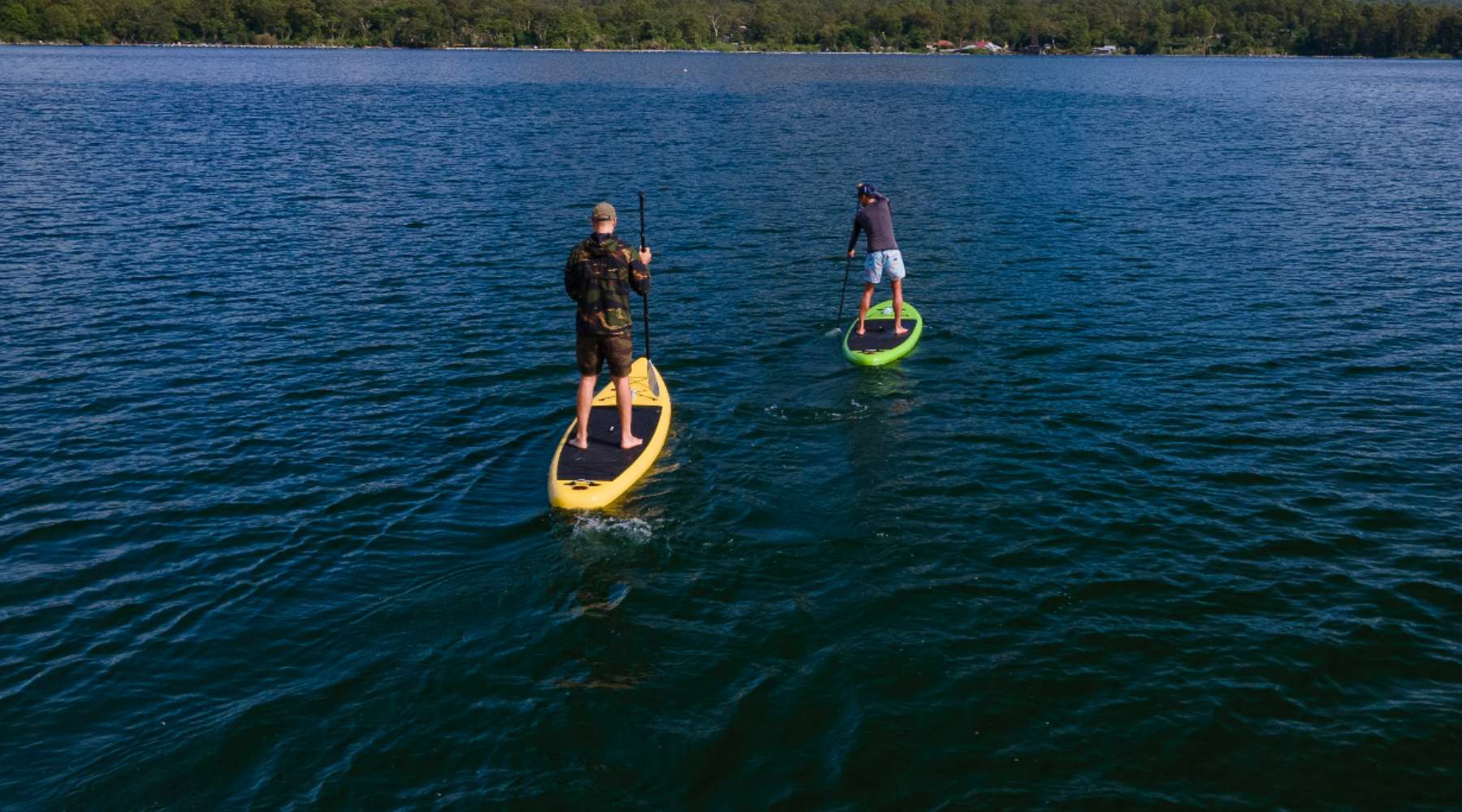
Embrace the Journey
Paddle boarding is a versatile and engaging water activity that allows you to explore new horizons, challenge yourself physically and mentally, and connect with nature. Embrace the journey of learning and improving your paddle boarding skills, and always prioritize safety, respect for the environment, and enjoyment. Whether you’re paddling on calm lakes, riding ocean waves, or navigating rivers, paddle boarding offers endless opportunities for adventure, relaxation, and personal growth. So, grab your board, paddle, and gear, and embark on an incredible paddle boarding journey that will undoubtedly leave you with unforgettable experiences and a deeper appreciation for the beauty of the water.
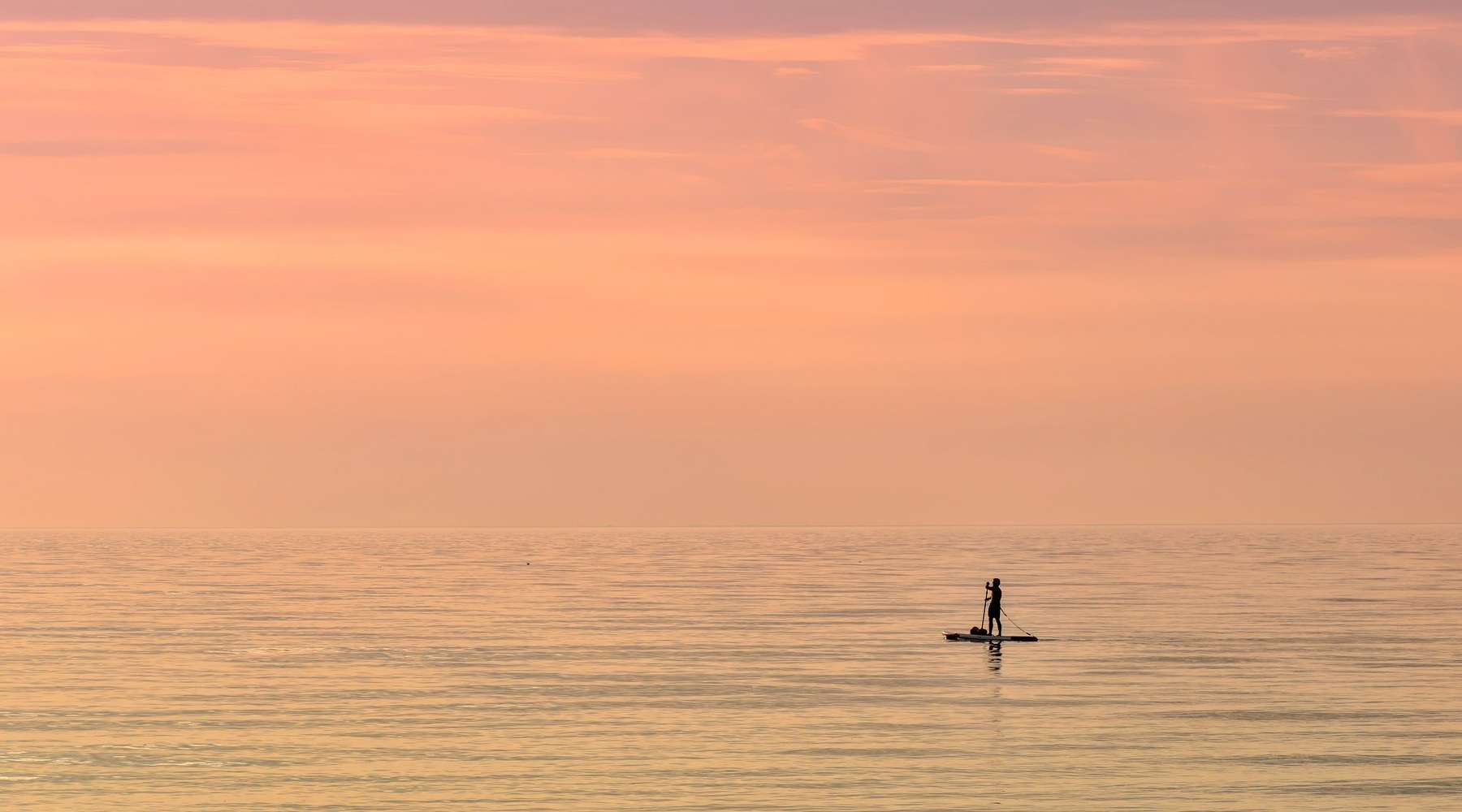
AND FINALLY….
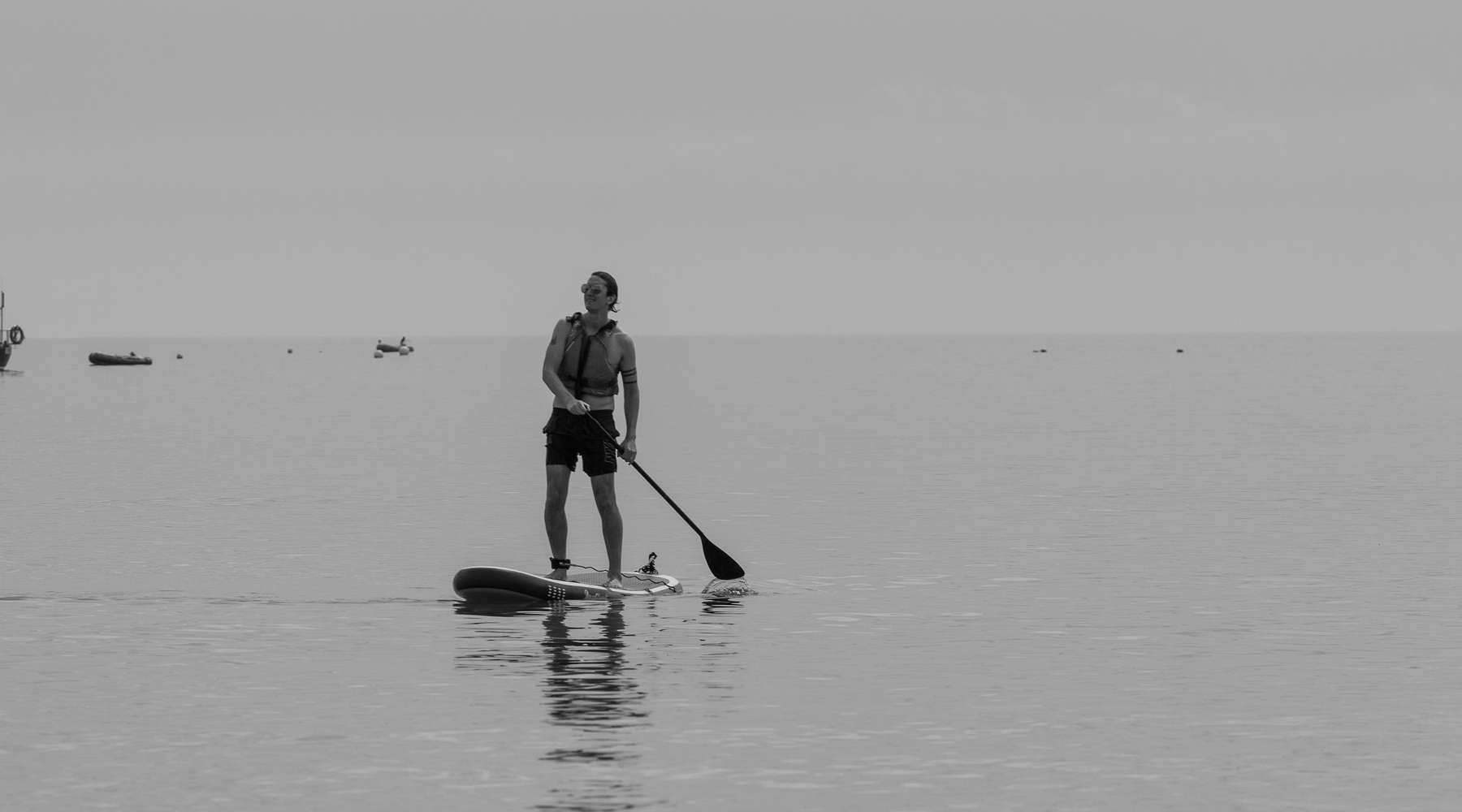
Frequently Asked Questions (FAQs): Riding the Wave of Curiosity
Q1: How do I maintain my paddle board?
To keep your paddle board in optimal condition, rinse it with fresh water after each use, store it in a cool and dry place, and periodically inspect it for any signs of damage.
Q2: Can I paddle board in cold weather?
Yes, you can paddle board in cold weather. However, it’s crucial to dress appropriately, wear a wetsuit if necessary, and be mindful of the water temperature and conditions.
Q3: Is paddle boarding suitable for children?
Paddle boarding can be enjoyed by people of all ages, including children. Ensure children wear appropriate safety gear and accompany them in calm and shallow waters.
Q4: How can I improve my balance on a paddle board?
Improving balance on a paddle board comes with practice. Start by paddling in calm waters, gradually challenging yourself with different conditions and stances.
Q5: What is the point of paddle boarding?
Paddle boarding offers a variety of benefits, both physical and mental. It provides a unique way to explore bodies of water, such as lakes, rivers, and oceans, allowing you to immerse yourself in nature and enjoy the serenity of the surroundings Paddleboarding offers a comprehensive workout that targets your entire body, activating and strengthening your core muscles, refining your balance, and boosting your cardiovascular endurance. Moreover, it can be a form of relaxation and stress relief, as the rhythmic motion of paddling promotes mindfulness and a sense of tranquillity.
Q6: Is paddle boarding easy or hard?
The difficulty of paddle boarding can vary depending on individual factors such as balance, coordination, and previous experience with water sports. For some, it may come naturally and be relatively easy to pick up, especially in calm and stable water conditions. However, mastering advanced paddle boarding techniques and paddling in more challenging environments, such as waves or strong currents, can require practice and skill development. With patience, persistence, and proper instruction, most people can learn to paddle board effectively.
Q7: What is the definition of a paddle board?
A paddle board, also known as a stand-up paddleboard (SUP), is a long and narrow watercraft designed for standing and paddling. It typically features a buoyant board made of materials such as foam, fiberglass, or inflatable PVC, providing stability and flotation. Paddle boards come in various shapes, sizes, and designs, catering to different paddling styles and conditions. They are propelled forward using a paddle, which the rider holds and uses to generate thrust in the water.
Q8: Is paddleboarding a good way to lose weight?
Yes, paddleboarding can be an effective way to aid in weight loss. It is a low-impact, full-body workout that engages multiple muscle groups, including the core, arms, legs, and back. Paddling against the resistance of the water helps burn calories, improve cardiovascular fitness, and tone muscles. Additionally, paddleboarding can be a fun and enjoyable form of exercise, making it easier to stay consistent and motivated in your weight loss journey. However, it is important to combine paddleboarding with a balanced diet and other forms of physical activity for optimal results.
Q9: What are the risks of paddleboarding?
While paddleboarding is generally safe, there are some risks to be aware of. Falling off the board and into the water is a possibility, especially for beginners or in challenging conditions. This can lead to potential injuries, such as bumps, bruises, or sprains. Additionally, adverse weather conditions, strong currents, or offshore winds can pose hazards to paddlers. It is important to always assess the water and weather conditions, wear appropriate safety gear, and adhere to safety guidelines to minimize risks.
Q10: Do you get wet paddleboarding?
Yes, it is likely that you will get wet while paddleboarding. Unless you are paddling in extremely calm waters without any disturbances, there is a chance of water splashing onto the board or getting onto you while paddling. Falling off the board is also a possibility, which would result in getting wet. However, with proper balance and technique, you can minimize the amount of water that splashes onto you.
Q11: What to expect first time paddleboarding?
During your first time paddleboarding, you can expect a learning curve as you become familiar with balancing on the board and paddling technique. It is normal to feel a bit wobbly at first, but with practice, you will gradually improve your stability and confidence. Expect to get a little wet and be prepared to fall into the water a few times as you find your balance. Overall, your first paddleboarding experience can be an exciting and enjoyable introduction to the sport.
Q12: Do you need to be fit to paddleboard?
While paddleboarding can be physically demanding, it is suitable for people of various fitness levels. Beginners can start at their own pace and gradually build up their strength, balance, and endurance. Paddleboarding offers a low-impact workout that can be adjusted to match your fitness level. As you gain experience and confidence, you can engage in more challenging paddleboarding activities, such as racing or paddleboard yoga, which require higher levels of fitness.
Q13: How do you paddleboard for the first time?
When paddleboarding for the first time, follow these steps:
- Start in calm and flat water conditions.
- Stand next to the board in shallow water and carefully step onto it, maintaining a stable and balanced stance.
- Hold the paddle with one hand on the handle and the other hand on the shaft, ensuring the blade is facing away from you.
- Begin paddling by submerging the blade fully into the water, using your core muscles to pull the paddle towards the board.
- Alternate paddling on each side, keeping a steady rhythm and using your legs and hips for stability.
- Practice maintaining balance and gradually increase your paddling distance and speed as you feel more comfortable.
Q14: Do paddleboards flip easily?
Paddleboards are designed to be stable and resistant to flipping over. However, they can be more prone to flipping in certain conditions, such as rough waves, strong winds, or when navigating challenging water features. It is essential to maintain balance, use proper paddling technique, and be mindful of the water conditions to minimize the risk of flipping. With experience and skill development, you will become more adept at maintaining stability on the board.
Q15: Is it okay to paddleboard alone?
Paddleboarding alone is possible, but it is generally recommended to have a buddy or let someone know about your paddling plans for safety purposes. Having a companion provides an extra layer of security and assistance in case of any emergencies or unexpected situations. If you do paddleboard alone, ensure you are confident in your abilities, familiar with the area, and equipped with appropriate safety gear. Always prioritize safety and exercise caution while paddleboarding alone.
Q16: Is it hard to stand up on a paddleboard?
Standing up on a paddleboard can be challenging for beginners, especially those who are new to balancing on water. However, with practice, it becomes easier to find stability and maintain an upright position. Starting in calm and shallow water, practice getting on the board from a kneeling position and gradually transition into a standing position. Keep your feet shoulder-width apart and your knees slightly bent to improve balance. With time and experience, standing up on a paddleboard will become more natural.
Q17: Is paddleboarding hard on your knees?
Paddleboarding is generally a low-impact activity and does not put excessive strain on the knees. However, if you have pre-existing knee conditions or are using improper technique, it is possible to experience some discomfort or strain in the knee joints. It is important to maintain proper form, engage your core muscles for stability, and avoid excessive stress on the knees. If you have concerns about your knees, consult with a healthcare professional before engaging in paddleboarding or any physical activity.
Q18: Why can’t I balance on a paddleboard?
Difficulty in balancing on a paddleboard can stem from various factors, including lack of core strength, improper weight distribution, incorrect foot placement, or tense muscles. It is essential to focus on maintaining a stable and balanced stance, engaging your core muscles for stability, and relaxing your body to find equilibrium on the board. With practice and gradual improvement of your balance and coordination, you will become more comfortable and proficient in maintaining balance on a paddleboard.
Q19: Why can’t I stand on a paddleboard?
Difficulty in standing on a paddleboard may be attributed to factors such as insufficient core strength, improper technique, fear of falling, or balance issues. To improve your ability to stand on a paddleboard, focus on developing your core muscles through exercises like planks and stability training. Start by practicing in calm and shallow waters, using proper paddle technique and distributing your weight evenly on the board. Gradually increase your confidence and balance by practicing regularly.
Q20: Do paddleboards flip over?
Paddleboards can flip over in certain situations, such as when encountering strong waves, turbulent water, or when navigating challenging conditions. However, properly designed paddleboards with adequate buoyancy and stability are less likely to flip over under normal circumstances. It is crucial to choose a paddleboard appropriate for your skill level and the intended paddling conditions to minimize the risk of flipping. Additionally, maintaining proper balance and using correct paddling technique will help prevent accidental flipping.
Q21: Why do my legs shake when paddleboarding?
Leg shaking while paddleboarding can be a result of muscle fatigue or engaging muscles that are not accustomed to the specific movements required for paddleboarding. Paddleboarding engages the muscles in your legs, core, and back, which may cause temporary muscle fatigue and shaking. With regular practice and conditioning, your muscles will become stronger and more accustomed to the paddleboarding movements, reducing the shaking sensation.
Q22: Should you paddleboard if you can’t swim?
If you cannot swim, it is generally not advisable to paddleboard in deep or open waters without proper safety precautions. Accidental falls or unexpected situations can occur while paddleboarding, and being able to swim is an important skill for water-based activities. It is recommended to wear a personal flotation device (PFD) or a life jacket regardless of your swimming ability and to paddleboard in shallow, calm waters with supervision until you become a confident swimmer.
Q23: How do I keep my feet from going numb on a paddleboard?
To prevent your feet from going numb while paddleboarding, consider the following tips:
- Wear proper footwear that provides cushioning and support.
- Adjust your stance and foot placement periodically to promote blood circulation.
- Shift your weight and move your feet to activate different muscles and prevent numbness.
- Take breaks and stretch your feet and ankles during longer paddleboarding sessions.
- Avoid wearing tight shoes or footwear that restricts blood flow.
Q24: Why am I so tired after paddleboarding?
Paddleboarding is a physically demanding activity that engages multiple muscle groups and requires continuous effort to maintain balance and propel the board. The exertion of paddling, along with engaging your core muscles and stabilizing your body, can lead to fatigue. Additionally, factors such as wind, currents, or paddling in rough conditions can increase the intensity of the workout and contribute to post-paddleboarding fatigue. It is important to stay hydrated, nourished, and gradually build your endurance to minimize fatigue.
Q25: Why do my legs hurt after paddleboarding?
Leg pain after paddleboarding can be a result of engaging and using muscles that are not accustomed to the specific movements and demands of paddleboarding. The continuous balance adjustments, leg positioning, and paddle strokes can strain the muscles in your legs. It is common to experience muscle soreness, especially in the calves, thighs, and glutes, after paddleboarding. Proper warm-up, stretching, and gradually increasing your paddling duration and intensity can help reduce leg pain and promote muscle recovery.
Q26: How do you move around on a paddleboard?
To move around on a paddleboard, follow these steps:
- Begin by kneeling on the board, close to the centre or slightly forward of the centre.
- Shift your weight towards the direction you want to move.
- Use a paddling stroke on the opposite side of the board, angling the paddle towards the tail to propel yourself in the desired direction.
- Maintain balance and stability by engaging your core muscles and adjusting your stance as you move.
- Practice and experiment with different strokes and techniques to navigate and manoeuvre the paddleboard efficiently.
Q27: Can you paddleboard at night?
Paddleboarding at night is possible but requires extra precautions and adherence to safety measures. It is important to have proper lighting on your paddleboard to enhance visibility and make yourself visible to others. Use a waterproof headlamp or attach lights to your board and wear reflective gear. Familiarize yourself with the area and any potential obstacles, and avoid paddling alone at night. Additionally, check local regulations and restrictions regarding night time paddleboarding activities.
Q28: Can you paddleboard in the rain?
Yes, you can paddleboard in the rain as long as you take appropriate measures and consider safety factors. Dress in waterproof or quick-drying attire to stay comfortable and maintain body temperature. Be aware that rain may affect visibility, so use caution and choose familiar and safe paddling locations. Consider the presence of lightning or storms, as these can pose significant risks, and it is advisable to avoid paddleboarding during severe weather conditions.
Q29: Can you paddleboard in the winter?
Paddleboarding in the winter is possible, but it requires additional precautions and proper cold-weather gear. Ensure you have a wetsuit or dry suit appropriate for the water temperature to prevent hypothermia. Dress in layers, wear neoprene booties and gloves, and consider a hood or neoprene cap to retain body heat. Choose protected water bodies and be cautious of icy conditions. Paddleboarding in winter may be more challenging and less common, so check local regulations and consult with experienced paddlers in your area.
Q30: Can you paddleboard with a dog?
Yes, it is possible to paddleboard with a dog, and many dogs enjoy the experience. However, it is important to ensure your dog’s safety and comfort. Introduce your dog gradually to paddleboarding, allowing them to become familiar with the board on land before venturing onto the water. Use a proper canine life jacket for your dog’s safety and consider their size, breed, and swimming ability. Start in calm waters and practice basic commands and balance before attempting longer outings. Always prioritize your dog’s well-being and monitor their behaviour for signs of fatigue or discomfort.
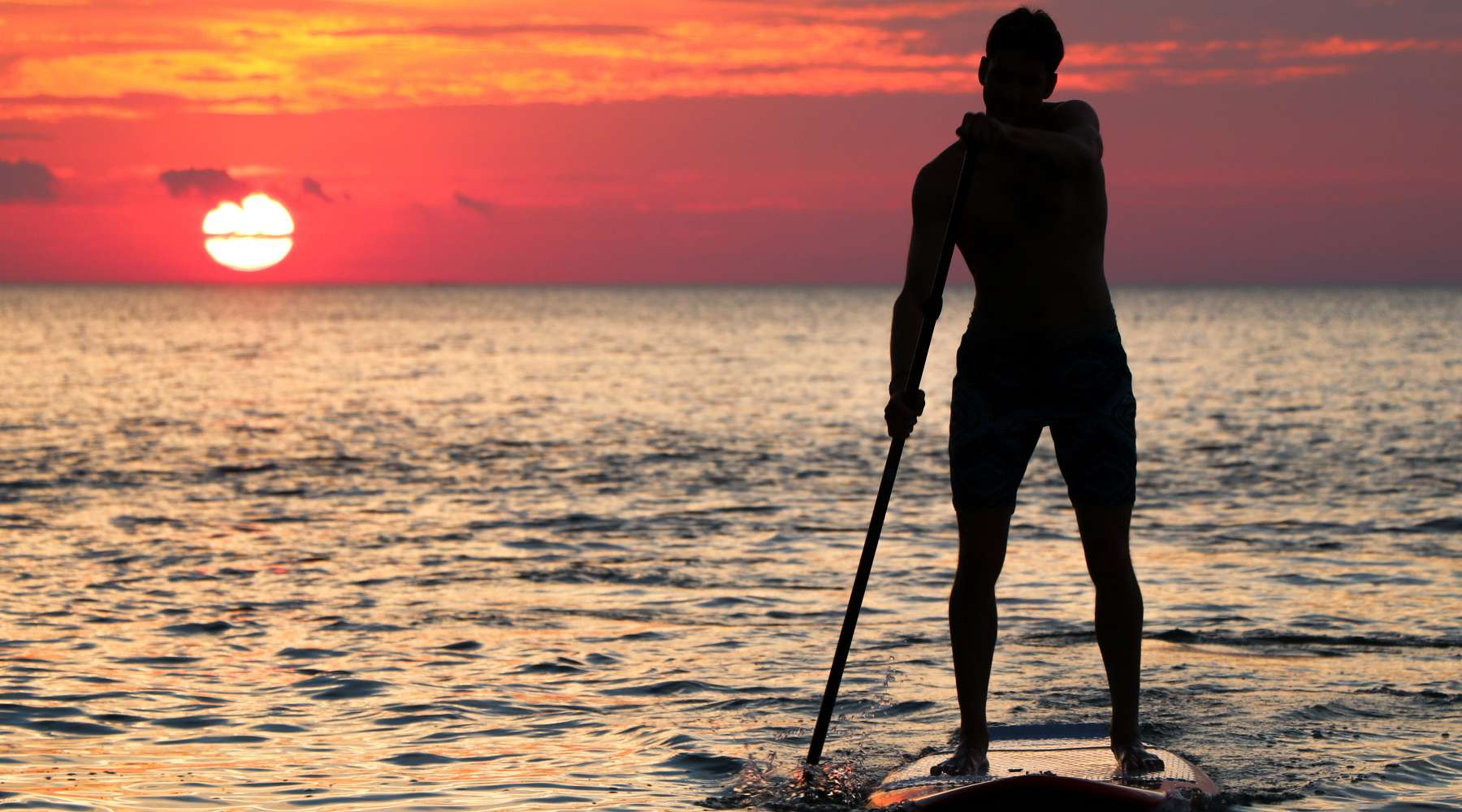
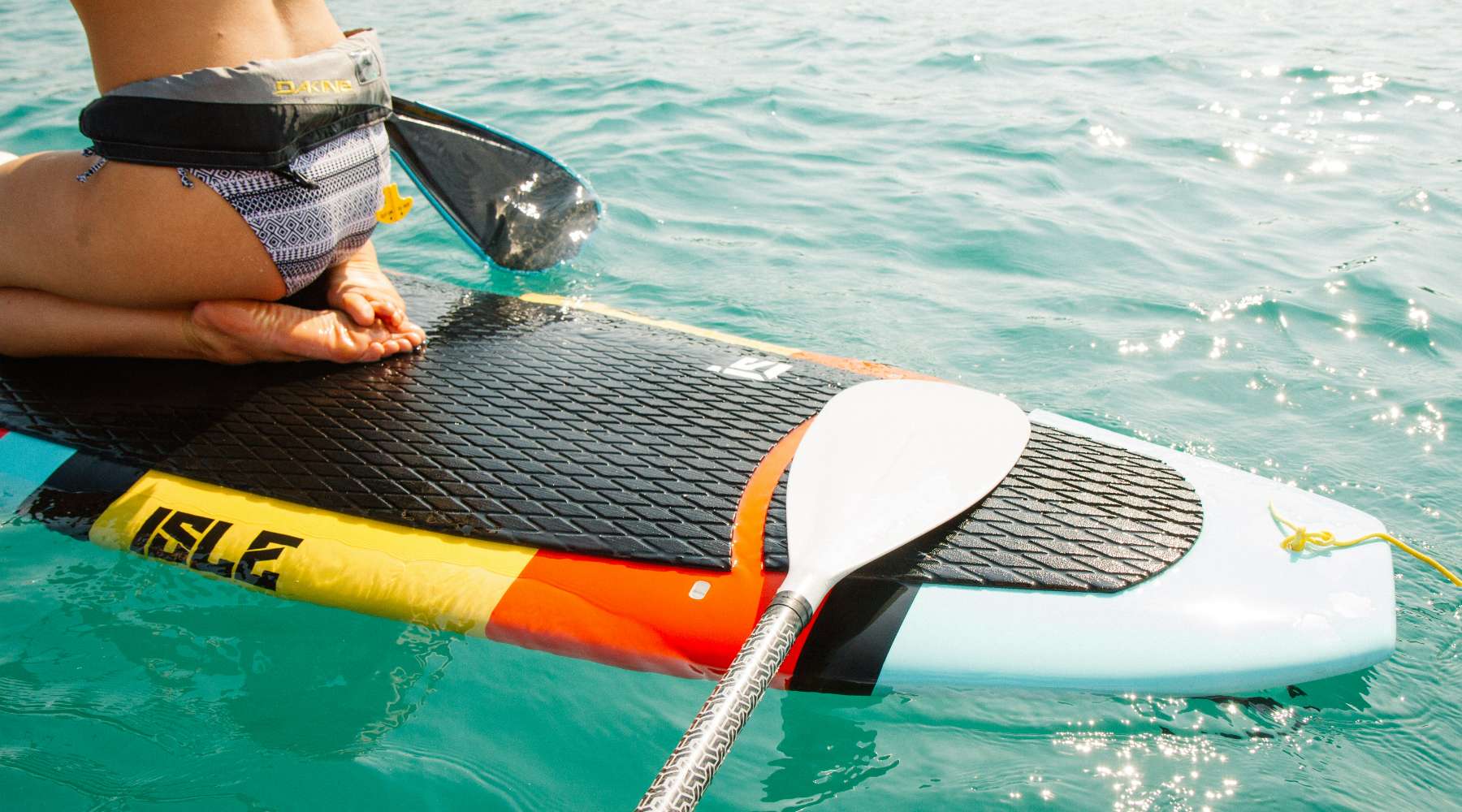
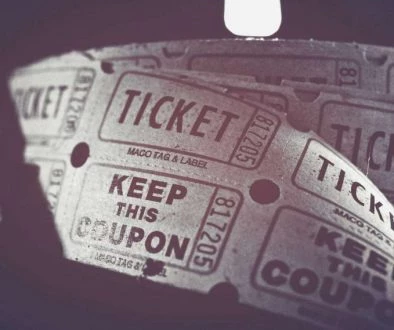


June 24, 2023 @ 1:59 pm
Hello guys! Nice Article!